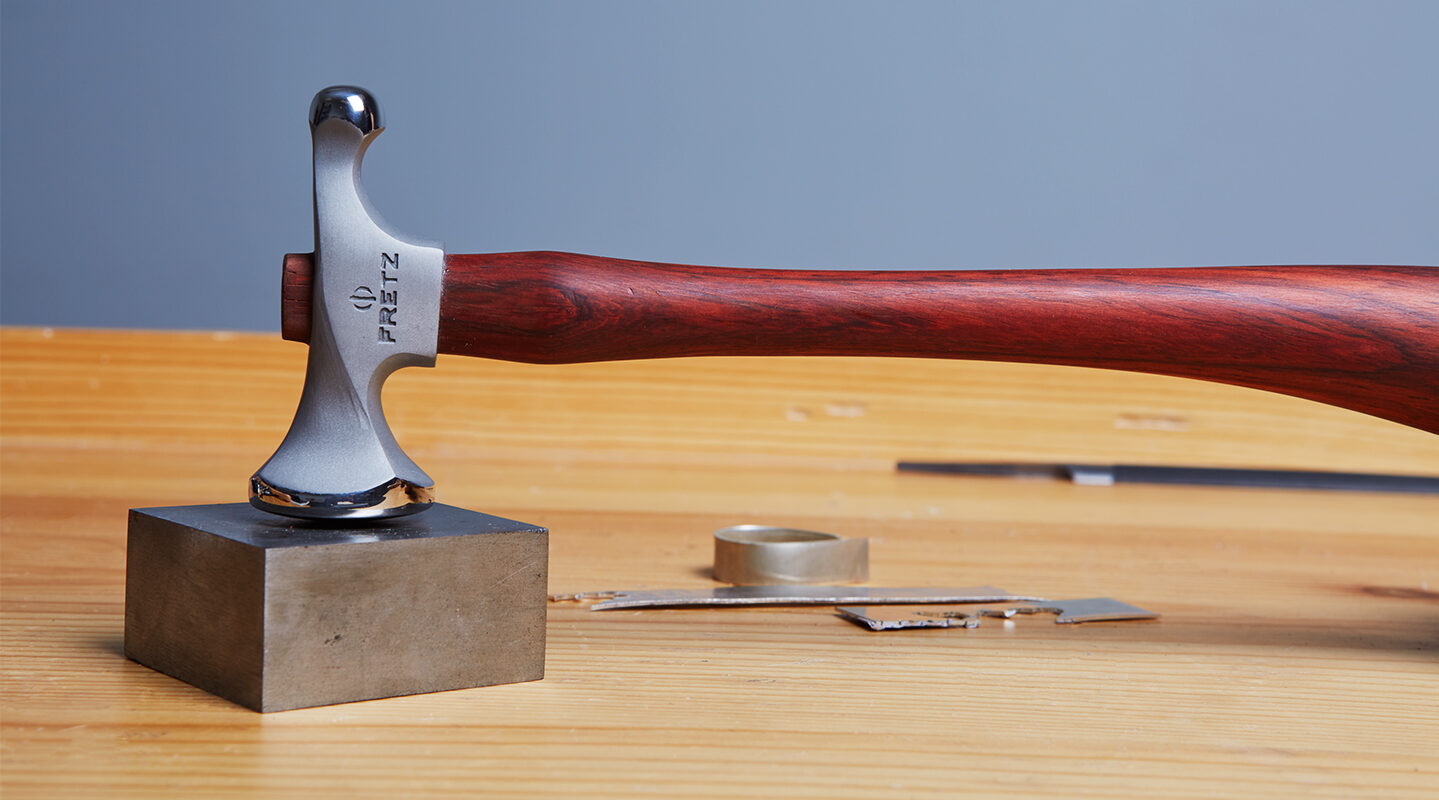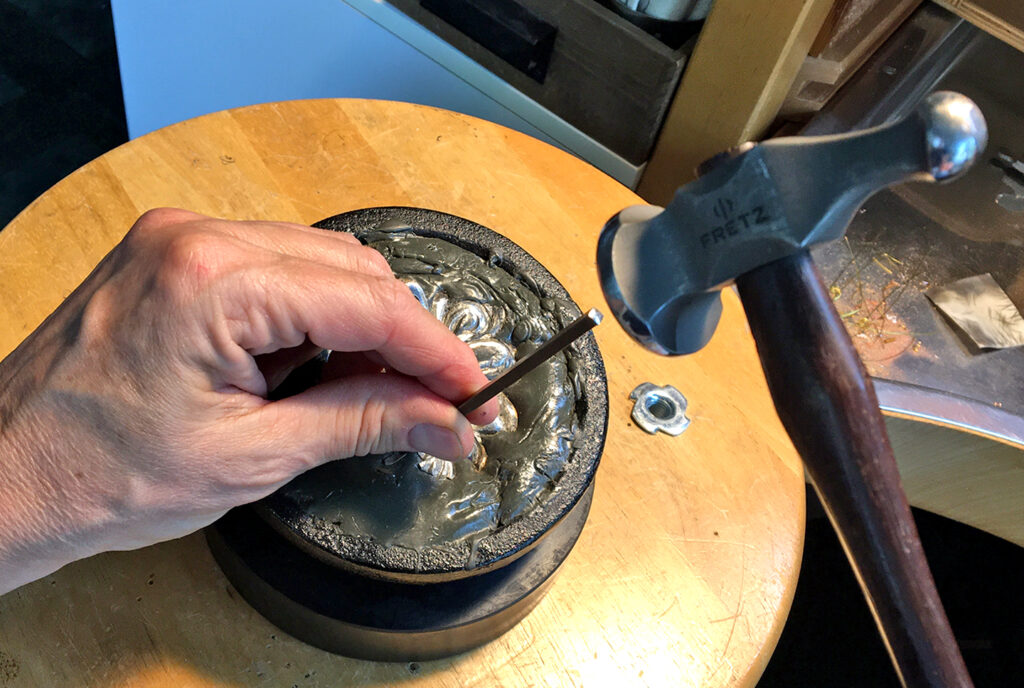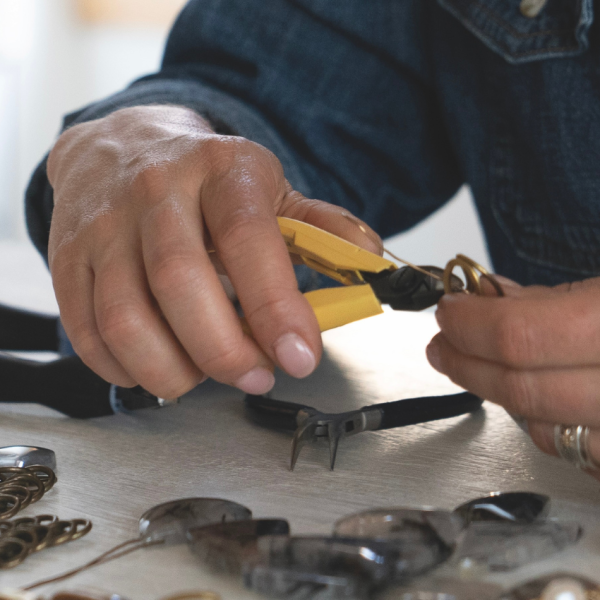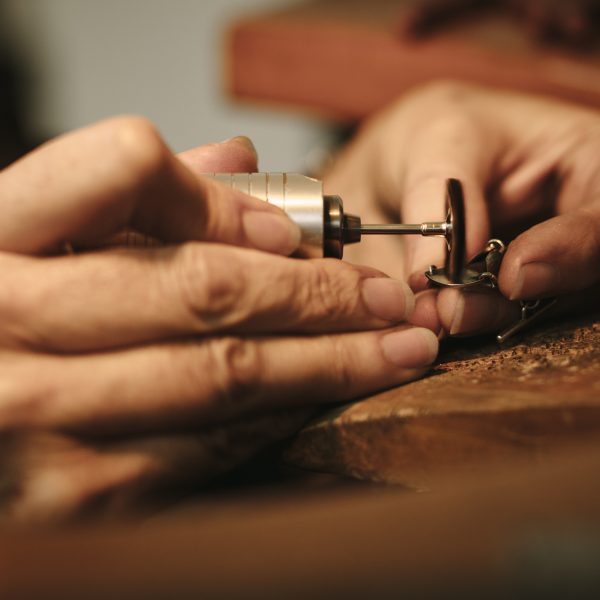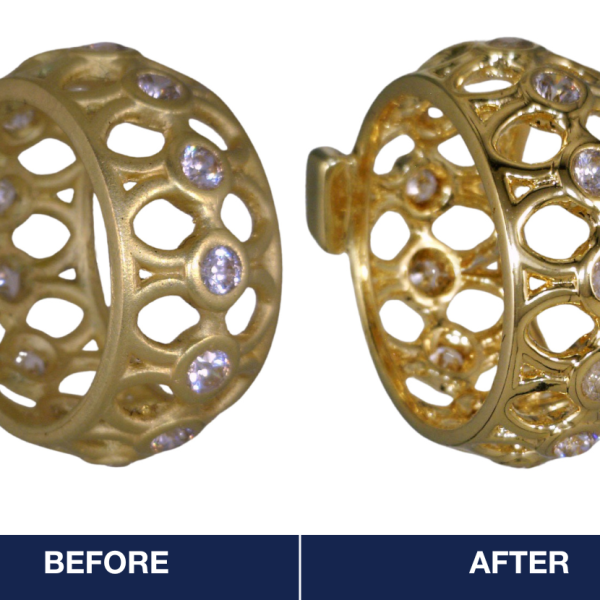When performing those everyday jewelry making tasks like tapping, riveting, texturing, stamping, and . . . um . . . chasing, a really good utility hammer quickly becomes one of those often-reached-for and most-used hand tools. Sure, you can use a ball peen hammer for random acts of wham, but the timeless perfection of a well-designed chasing hammer just can’t be beat. A good chasing hammer will quickly become your automatically picked up, go-to, everyday, most-used utility hammer.
Second only to an excellent jeweler’s saw frame in terms of most-required jewelry making tools, a chasing hammer is one hand tool out of about a dozen that I just can’t live without. When it comes to hammers, there’s one name that brings joy to the heart of every jewelry maker – enthusiast or seasoned pro – and that name is Fretz.
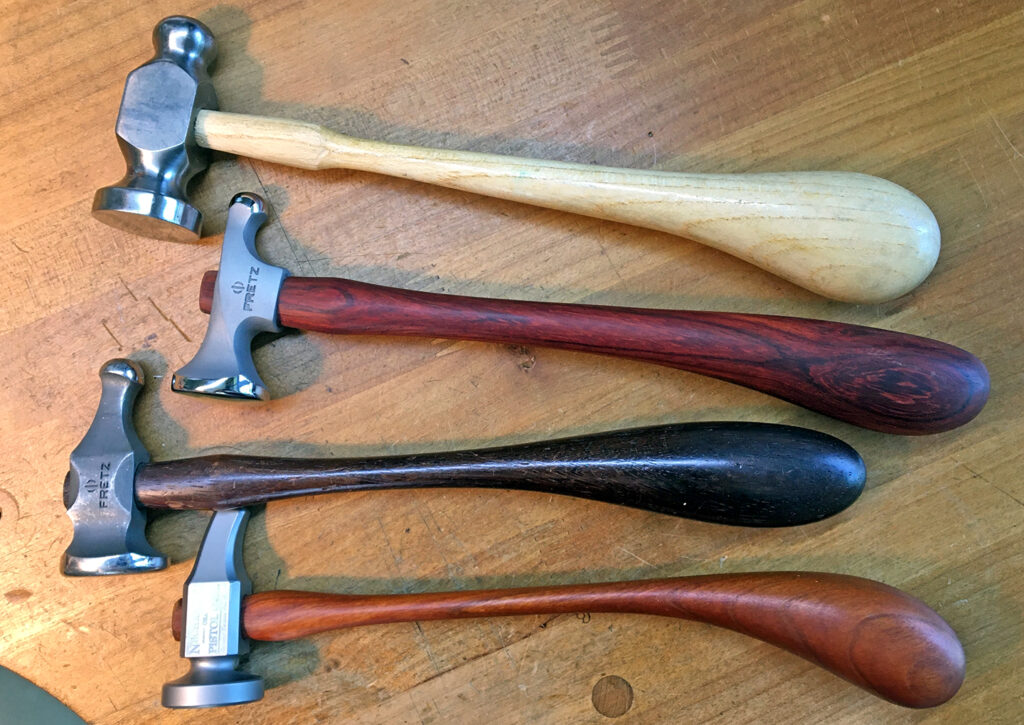
Like many jewelry makers, I own and use dozens of Fretz hammers and forming tools, but the one Fretz must-have I reach for every single day is my Fretz Chasing Hammer (8218265) because it’s simply just the right weight, has the correct balance, and it’s the perfect shape and just the right size for me and my favorite everyday metalworking tasks. Out of the assortment of chasing hammers I use for “chasing only” and other metal forming and fabrication tasks, this is the one hammer that lives in a permanent spot on the upper east side of my bench top, right next to the steel block and in front of the flex shaft key, so I can grab it without looking.
Although some beginning jewelry makers keep a pristine chasing hammer just for hammer texturing, my Fretz isn’t pristine – because a chasing hammer really shouldn’t be. You see, chasing hammers have been designed since day one for striking tool steel, not jewelry metal and if you want a hammer for texturing, you should probably use a texture hammer or planishing hammer instead.
Chasing hammers were designed to strike chasing punches and they all feature a flexible, thin (or somewhat thin) wood handle that acts much like a whip when a punch is struck to reduce hand and wrist fatigue from repetitive motion. The large peen is designed to find the striking end of a punch without much effort to aim the hammer – because during chasing and repoussage, your eyes should be focused on the tip of the punch where it meets the metal, not on the end where you are hammering.
Follow Gesswein on Instagram or Facebook for my top tool tips this week and stay posted for more tool blogs!

